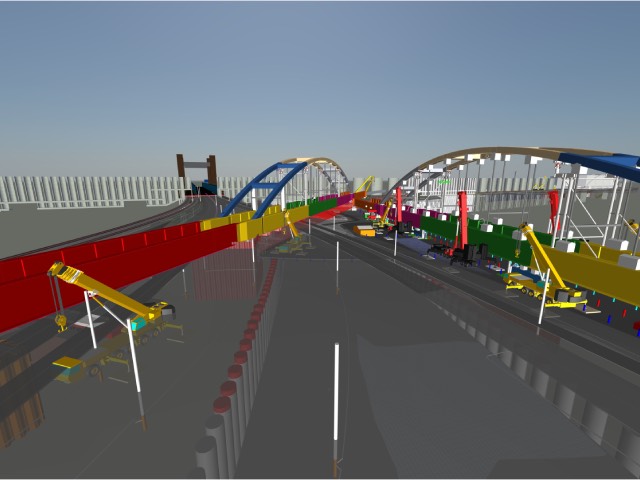The Port of Rotterdam and the construction industry are embracing digitisation at a rate of knots. Digitisation and automation allow collaboration in an increasingly complex environment. The precondition for digital collaboration between supply chain partners such as engineering firms and construction companies is that they all speak the same ‘digital’ language. This is why the Port of Rotterdam Authority is joining BIM Basis Infra, a common language used for exchanging digital information about infrastructure.
BIM Basis Infra helps prevent failure costs (the costs incurred due to errors in design and during construction). This development is in line with the Port of Rotterdam Authority’s ambition to build an ever smarter port and for the most reliable, seamless and sustainable logistics chains to operate through the Port of Rotterdam.
Digital replica makes port smarter
BIM (Building Information Management) and working with BIM standards will help the Port of Rotterdam Authority with the information management of the port’s various assets (such as quay walls, bollards, etc). The Port of Rotterdam Authority’s ambition is to build a digital infrastructure to shadow its analogue infrastructure. By building a digital replica (digital twin) of the Port Industrial Complex, the whole life cycle of the port area, i.e. the development, management and demolition of assets and infrastructure can be simulated and shaped. This will allow smarter and more efficient management of logistics chains and asset maintenance. 3D BIM creates a solid basis on which to develop this digital twin.
What is BIM?
Building Information Management, or BIM for short, stands for digital collaboration in the built environment. BIM is all about the integrated management and use/reuse of digital construction information throughout the life cycle of a building. Wherever possible, data is entered once and used multiple times. The client, the architect, consultants, contractor and installation engineer use open standards to exchange information with one another. The parties involved each use their own software.






































